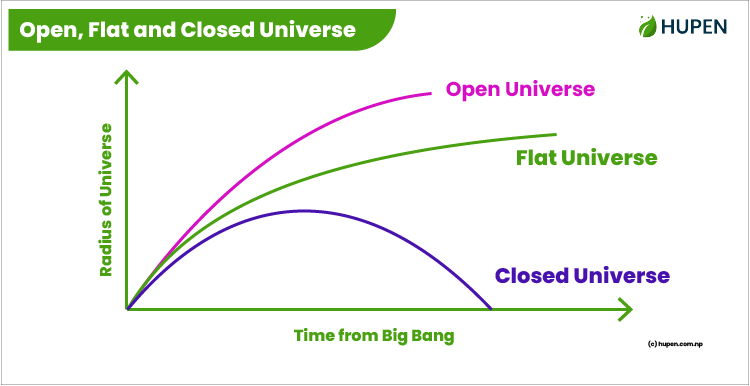
Universe
The infinite space consisting of Constellations, Galaxies, Stars, Planets, Satellites, Meteoroids, Dust Particles, Black Matter, etc. is called the Universe.

Importance of Gravitational Force in Universe
Gravitational force is paramount in shaping the structure and dynamics of the universe. It governs the motion of celestial bodies, from planets orbiting stars to galaxies gravitationally bound in clusters. Without it, celestial objects would disperse into space. Gravitational force plays a pivotal role in stellar evolution, triggering the formation of stars and determining their lifespan. Additionally, it enables the formation of massive structures like galaxy clusters and superclusters, influencing the large-scale structure of the cosmos. Understanding gravitational force is fundamental for comprehending the universe's past, present, and future, guiding research in cosmology and astrophysics.
The Big Bang Theory
The Big Bang Theory suggests that the universe began as an incredibly hot and dense point about 13.8 billion years ago, and it's been expanding ever since. Imagine the universe as a balloon being blown up: all the galaxies, stars, and planets are like dots on the surface of the balloon, getting farther apart as the balloon expands. Scientists study this expansion by observing how galaxies move away from each other. This theory helps us understand how the universe started and how it continues to change over time, offering insights into the vastness and evolution of our cosmic home.
Hubble’s Law
The Hubble Law says that galaxies are moving away from us, and the farther they are, the faster they're moving. It's like blowing up a balloon with dots on it: as the balloon expands, the dots move away from each other. Edwin Hubble discovered this in the 1920s, showing that the universe is expanding. This law helps us understand the age and size of the universe, and it's a key piece of evidence for the Big Bang theory.
Hubble's Law Statement
Hubble's Law states that,
“The velocity of the galaxy, which is also known as the redshift, is directly proportional to its distance.”
Now, Let us consider ‘V’ be the velocity of the galaxy and ‘d’ be the distance. Then according to Hubble’s Law,
Where H is the proportionality constant called the Hubble Constant. Its value is 73.8 km/sec/Mpc.
Future of Universe
Critical Density of Universe
Critical density is the value at which the Universe is at balance, and expansion is stopped. This value is estimated as (1~3)×10-26 kg/m3.
1. Open Universe
The universe which has a density less than the critical density is called an open universe. In an open universe, the universe keeps expanding forever.
2. Flat Universe
The universe which has a density equal to the critical density is called a Flat universe. In a flat universe, the universe remains constant(neither expands nor shrinks).
3. Closed Universe
The universe which has a density greater than the critical density is called a closed universe. In a closed universe, matter starts shrinking and finally converts into a point-sized object called the singularity. This event is called the Big Crunch. Then, the Big Bang event happens, and these two events occur in a certain period.

Share Now
Share to help more learners!

